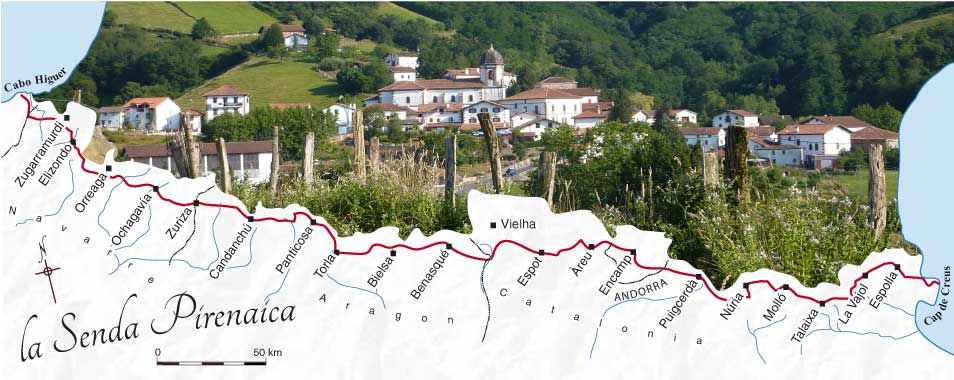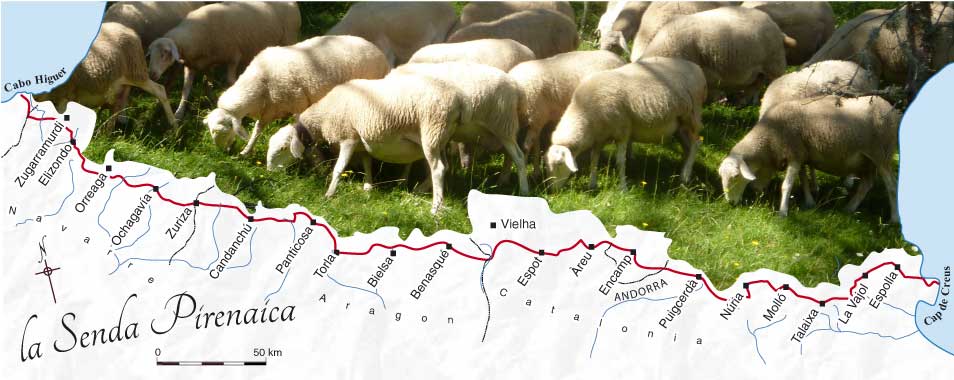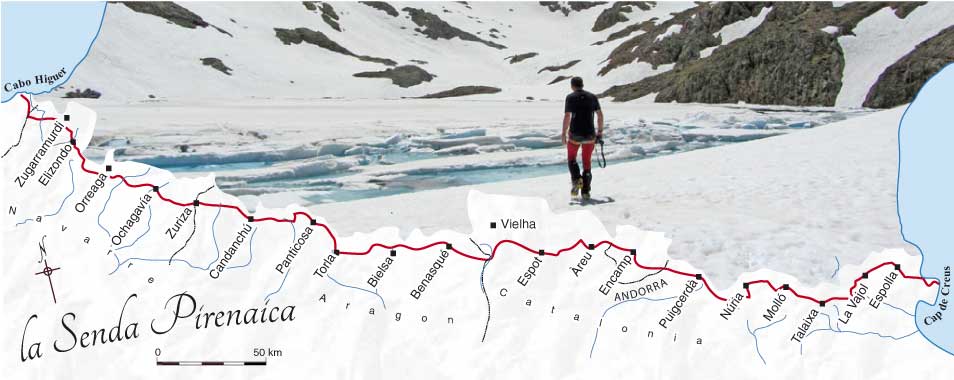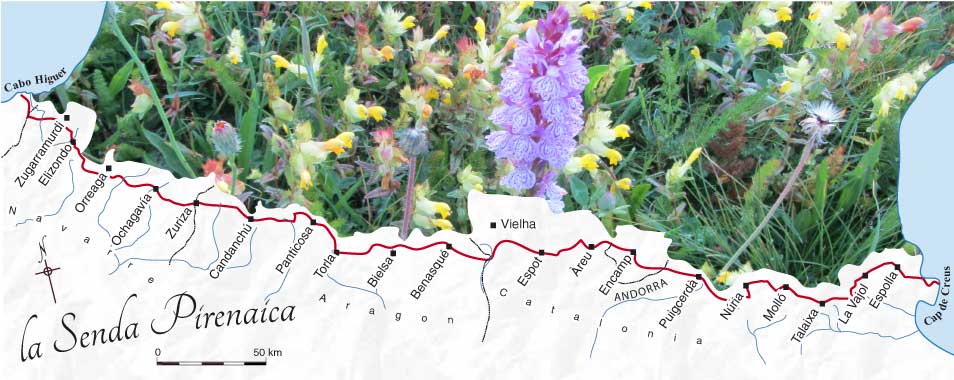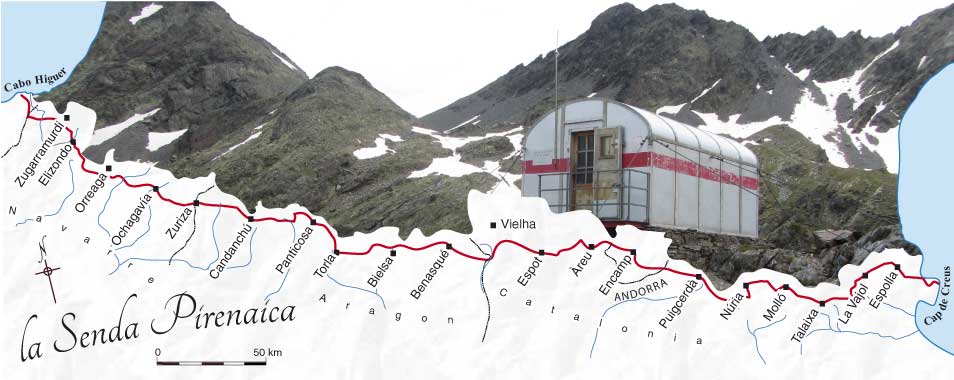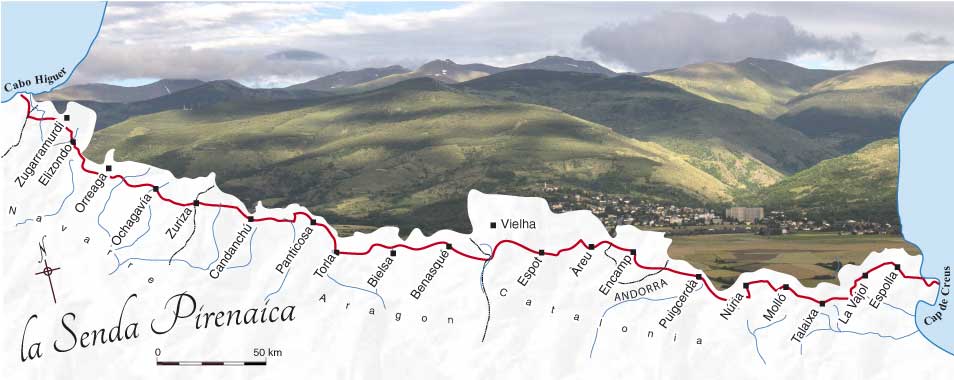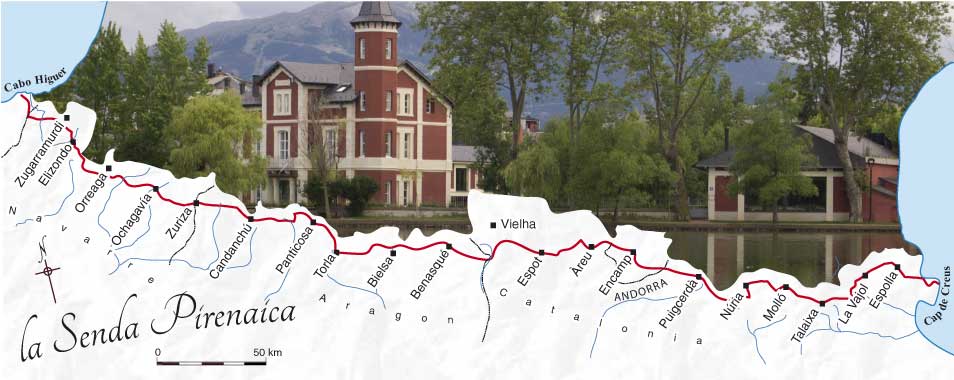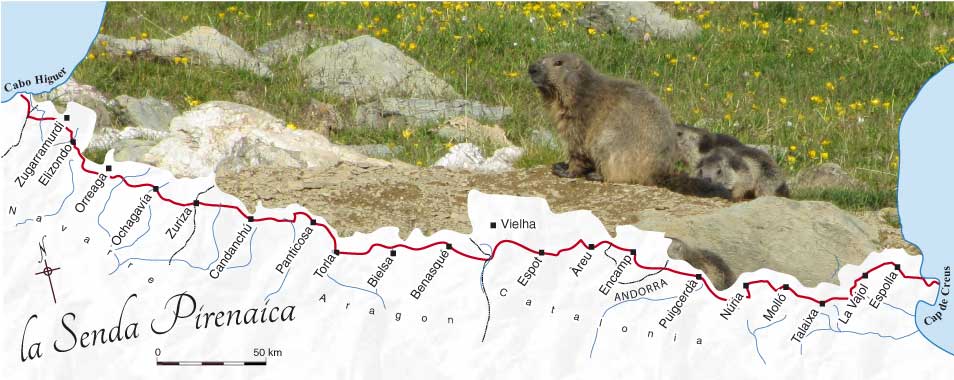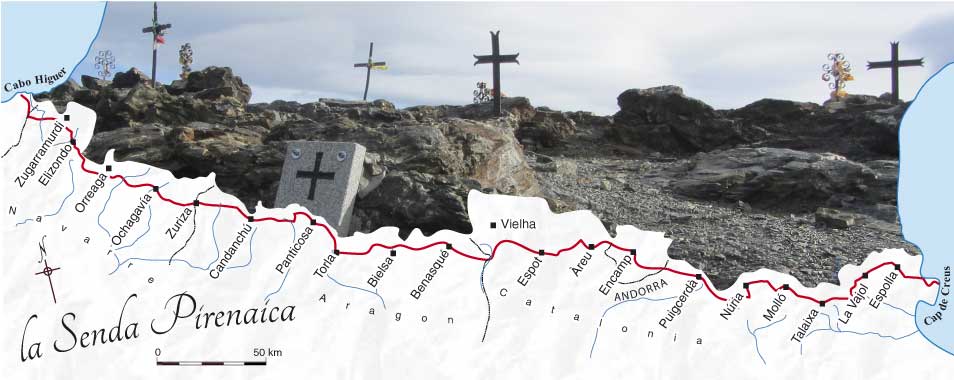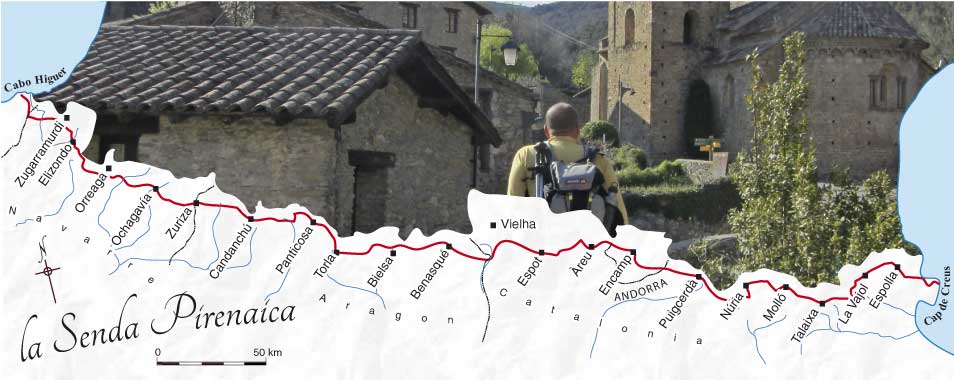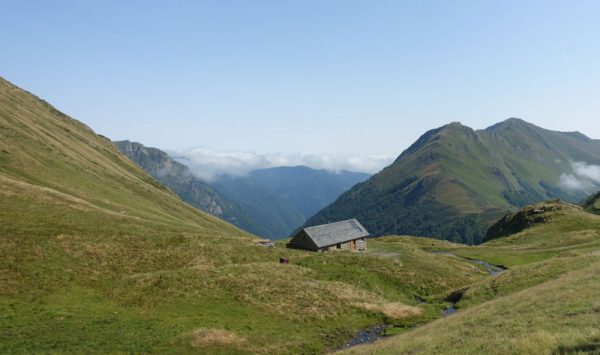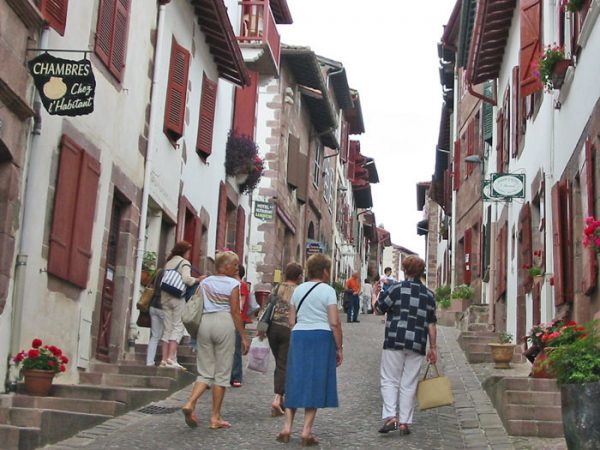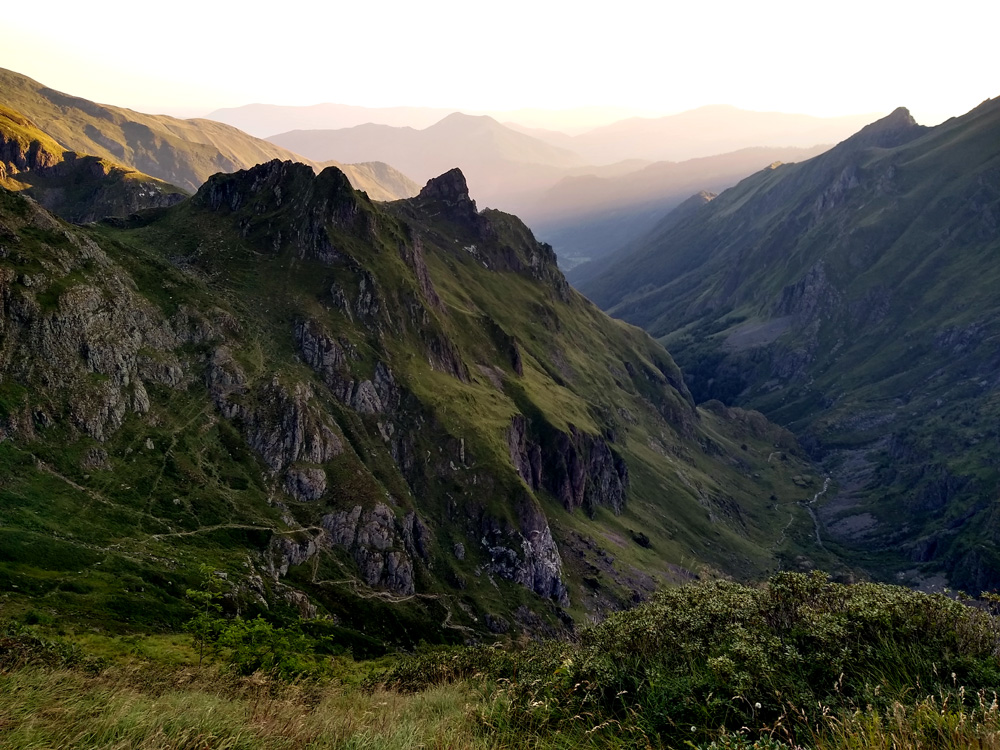
If you are hampered by the possession of a car and want to go from the hamlet of Quanca in Catalonia to Ossèse in France, you have to drive 210km. It takes four hours.
Yet the two hamlets are only 10km apart: there are mountains in the way.
If, on the other hand, you have a pair of walking shoes, there are wonderful things to be seen.
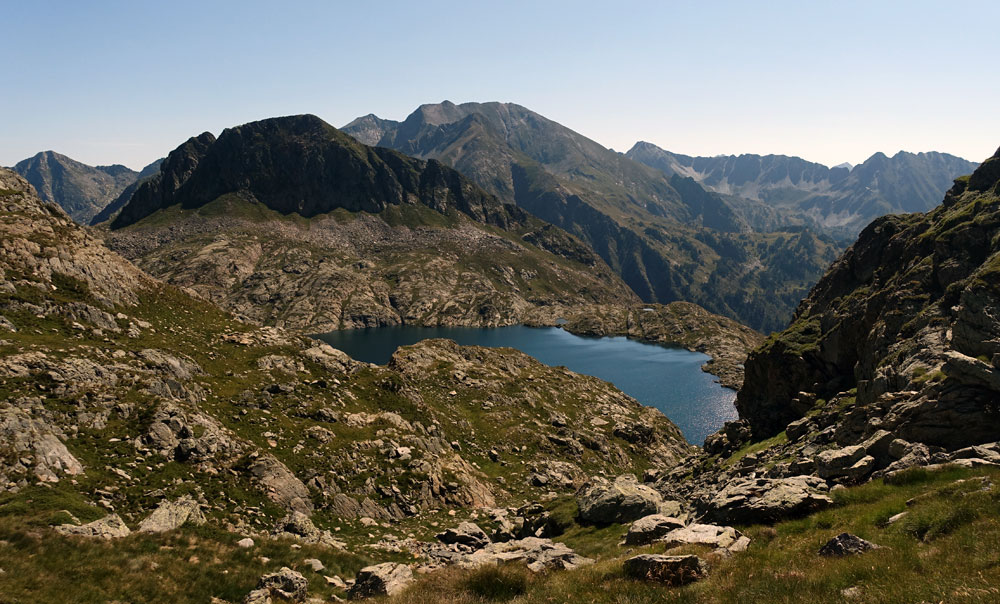
I walked over the frontier this weekend, trying out a route I haven’t used before, via Fangassal and Mariola to the pass at the Port de Marterat where I stayed in the hut overnight. I spent the evening watching an isard grazing on the other side of the valley.
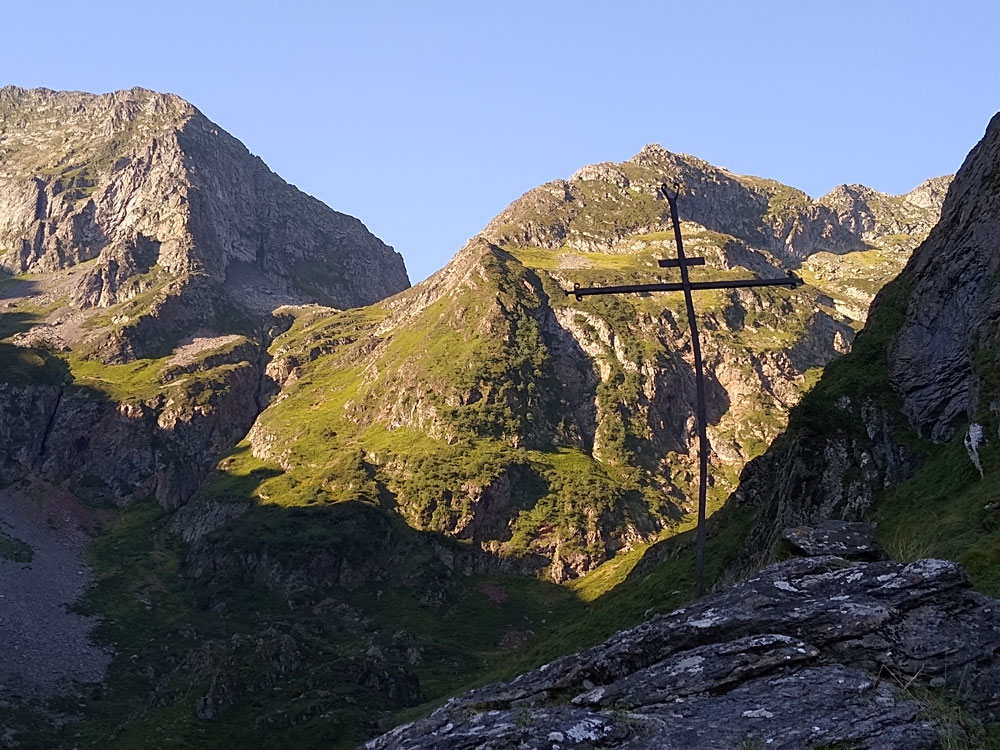
Next morning, I descended to Ossèse in France.
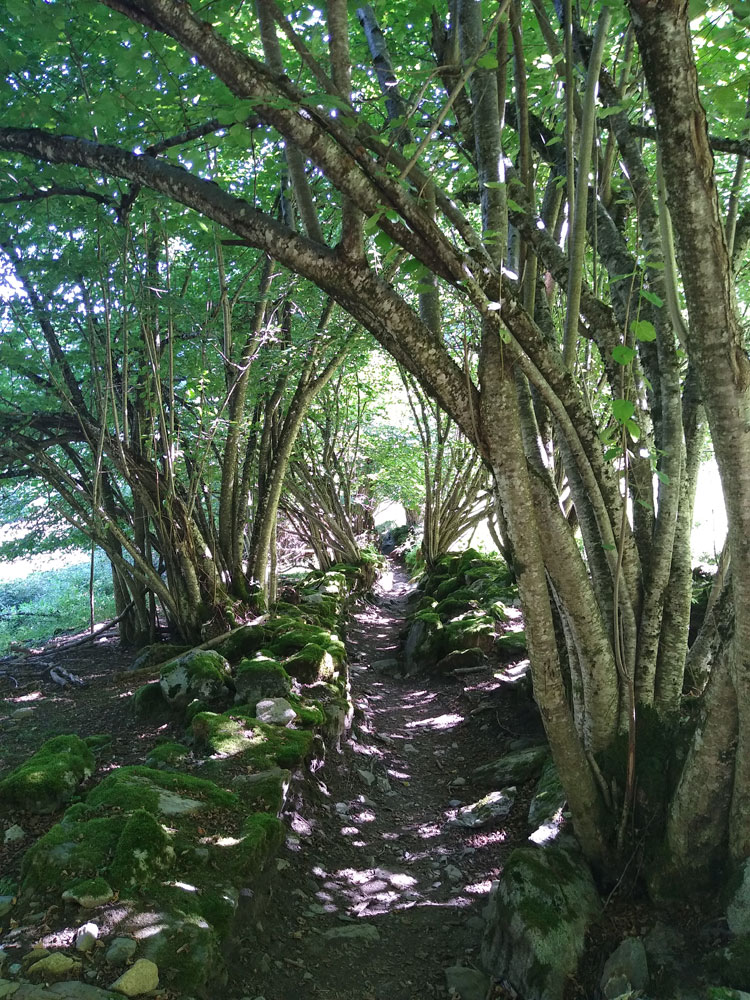
The route between Quanca and Ossèse is not just a pretty walk, it has a long history. It was one of the paths over the Pyrenees taken by colporteurs (peddlers) burdened with huge sacks of easily sold items, carrying also tales of the wider world to the isolated farming communities. Smugglers too found it useful.
In times of war, particularly during the Spanish Civil War and the Second World War, the route was used by refugees, soldiers and airmen seeking freedom. Nowadays, the route is one leg of a 4-day cross-border walk, ‘The Mountains of Liberty’, evoking that era.
In times of peace, the route was used by migrants attracted by the possibilities of a better life over the border.
In the 21st century, the only people to frequent the area apart from walkers are the livestock farmers and their shepherds who spend four months here each summer.
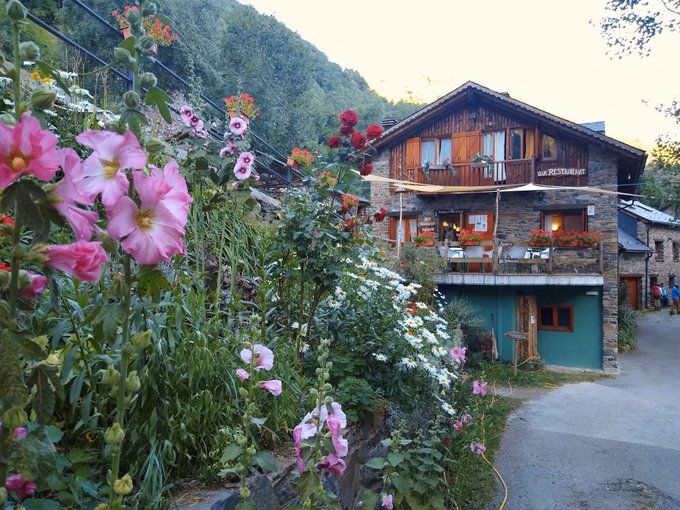
Accommodation: Bordes de Graus (Tavascan, Catalonia) and L’Escolan (Ustou, France).

